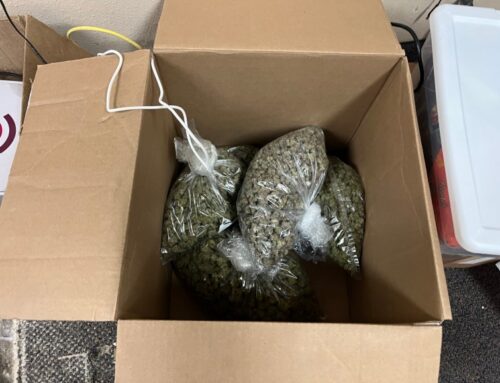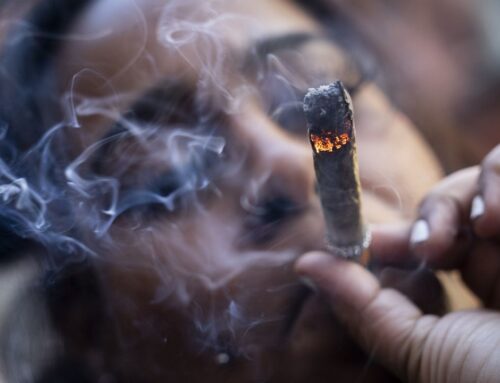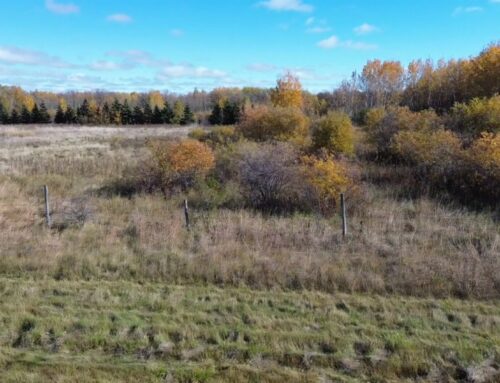Cannabis and Pupil Response: Study Examines Eye Measurements after Recent Inhalation | Can
October 23, 2025
Measuring the size of pupils may be useful in assessing acute cannabis inhalation, a recent study suggests. Pupil measurement and eye changes has been used by law enforcement to assess impairment from cannabis, the study notes, explaining that some previous studies have used pupillometer technology to objectively measure changes in pupils. This current study aimed to use this technology to measure pupil sensitivity and size of pupils after recent cannabis inhalation. “Pupillary dynamics as a marker of acute cannabis inhalation,” was published in Clinical Toxicology in September 2025 (1). The work was supported through funding from the National Institute on Drug Abuse (NIDA).
Study Design: Analyzing Changes in Pupil Size
Out of 126 participants, 95 were able to complete all the assessments. The participants inhaled cannabis as often as desired, and after 15 minutes, their pupils were measured using NeurOptics PLR-3000. Measurements were taken at baseline and at 40 minutes and 100 minutes following the cannabis inhalation. The cannabis, either flower or concentrate products, was provided by the participants.
For comparison, thirty of these participants completed the same assessments at the same time points without cannabis.
For pupil size, sensitivity, specificity, and accuracy were calculated. To find a combination of the most accurate and predictive metrics, a least absolute shrinkage and selection operator (LASSO) model was used.
How Cannabis Affects Pupil Response
Percent change in pupil size after cannabis use was demonstrated to have the highest area under the curve (AUC), specifically 0.73 at 40 minutes and 0.75 at 100 minutes.
Additional results included:
- Individual measures were more predictive than considering variables together in a LASSO model
Compared with the control group, cannabis inhalation was not associated with reliable changes in maximum pupil size, when measured in darkness. Diminished pupil dynamics, including pupil response to light, were more predictive of cannabis use. “Pupillary dynamics, when measured with an objective test, may contribute to providing an indication of recent cannabis inhalation,” the researchers concluded.
Alternative Measurements of Cannabis Intoxication
Previous studies have examined methods of assessing cannabis intoxication from sources other than inhalation. In a proof-of-concept study published in 2025, researchers at the National Institute of Standards and Technology (NIST) measured changes in concentration of THC and other cannabinoids on participants’ breath after ingestion of edibles (2). The study was part of a larger study to gauge impairment while driving, noting the lack of reliable methods of assessing impairment from THC.
In this study, 29 participants ingested cannabis edibles of their choice. One of two breath sampling devices were used at three timepoints over three hours. THC concentrations were found to have varied after ingestion.
Other results included:
- 19 participants showed a significant increase in THC concentration at any time point
- Four participants showed no change
- Six showed a significant decrease in THC concentration
- The variability between CBD and THC trends suggested differences in biological processing
This study did not compare THC concentration and THC dose, which was suggested for future studies.
“This study supports the idea that multiple breath measurements over a period of time could be a way to use a breathalyzer to detect cannabis use, regardless of how it’s ingested,” explained Tara Lovestead, a NIST chemical engineer, in a news release on the study (3). “However, devices will still need standards to ensure that they are accurate and used correctly, standards that don’t yet exist.”
References
- Brooks-Russell, A.; Godbole, S.; Kosnett, MJ.; Limbacher, S.; Subramanian, PS.; Brown, T.; Wrobel, J. Pupillary dynamics as a marker of acute cannabis inhalation. Clinical Toxicology. 2025. DOI: 10.1080/15563650.2025.2543066
- Berry, JL.; Brooks-Russell, A.; Lovestead, TM.; Jeerage, KM. The detection of cannabinoids in breath after ingestion of cannabis-infused edibles, Journal of Analytical Toxicology, 2025. DOI: https://doi.org/10.1093/jat/bkaf063.
- National Institute of Standards and Technology. NIST Makes First Detection of Cannabis in Breath From Edibles https://www.nist.gov/news-events/news/2025/07/nist-makes-first-detection-cannabis-breath-edibles (accessed Oct 23, 2025).
Search
RECENT PRESS RELEASES
Related Post



